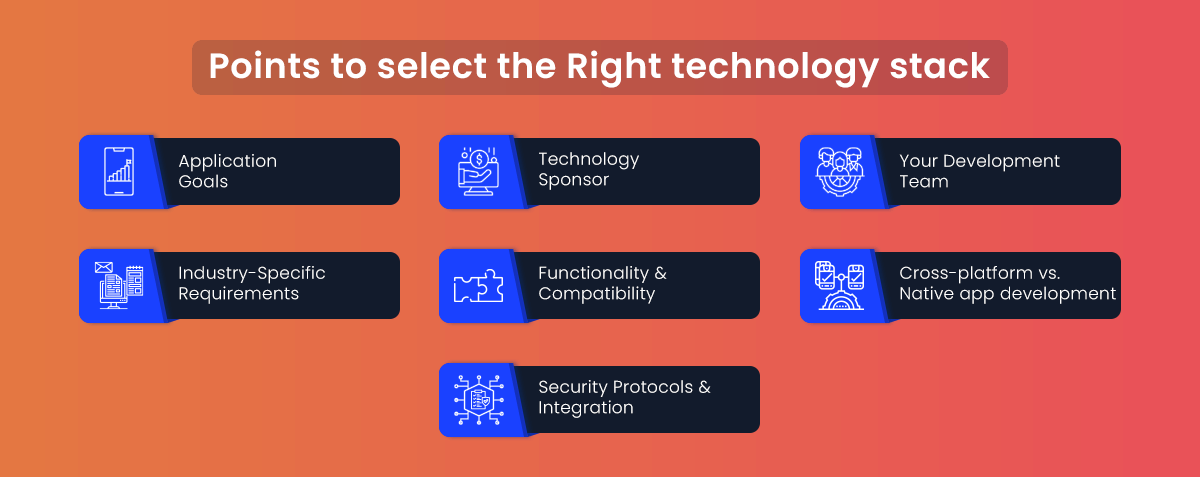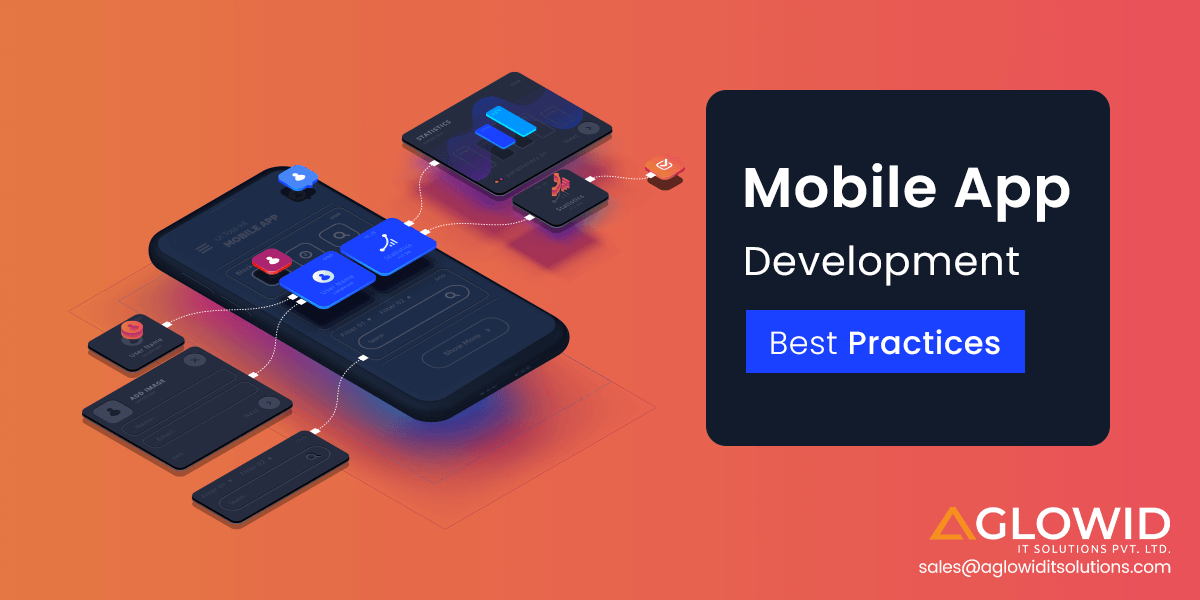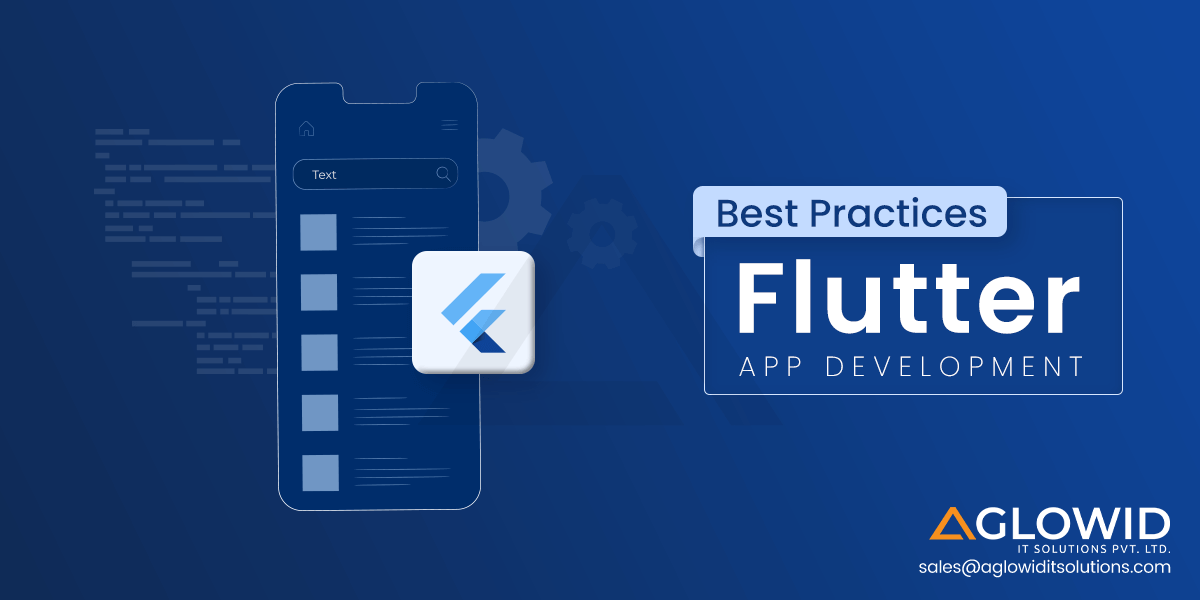Quick Summary: The world is shifting to smarter and handheld devices. There has been a drastic change in how users interact with the internet, from wired computers to portable laptops and mobile phones. Hence, following mobile app development best practices is crucial for staying relevant in today’s market. Let us find out the best practices for mobile app development for optimizing your mobile apps.
In the 20-25 years since its inception, mobile app development has come a long way. Naturally, more and more businesses are getting curious about this sector and hasting into developing their mobile app solutions as quickly as possible.
However, prioritizing speed over process is that you end up with a half-baked app that compromises essential aspects such as security, functioning, look and feel, or more.
This is why it is essential to understand the ‘how’ of mobile app development first.
If you are a non-tech business looking to build your first mobile app, or even an experienced mobile app development company working on their next project, understanding and revising the best practices in mobile app development can benefit you greatly in reducing cost, increasing efficiency, and creating a full-stack scalable mobile app solution.
Without wasting much time, let us first have a look at some of the fundamental principles of mobile app development that you should follow –
Mobile App Development Fundamental Principles
Some credible mobile app development principles can help you shape your app development process and help you make credible and necessary additions, reductions, and improvements to your mobile app.

1. Make App Navigation Easier
When building customer-centric mobile apps, your first and foremost priority has to optimize the customer experience. The easier it is for a customer to open your app and navigate to the feature they are looking for, the more they would be willing to spend time on your app, exploring your other services too. To make navigation more accessible, you should reduce visual load and additional elements that do not serve any purpose. Ensure you use the proper navigation structure for creating an engaging user experience.
2. Select the right technology stack
In the mobile app development process, one of the most important decisions you will have is selecting the right technology stack for your mobile app that is both scalable and complementary to your business requirements. Many credible established mobile app development platforms make the app development process easier and efficient.
Some primary considerations can help you shortlist the right technology stack for your mobile app development efforts –
- Application Goals
- Technology Sponsor
- Your Development Team
- Industry-Specific Requirements
- Functionality and Compatibility
- Cross-platform vs. Native app development
- Security Protocols and Integration

3. Follow the ‘Thumb Rule’
Another fundamental mobile app principle is based on improvising user experience design by enabling seamless user interactions by placing the key actionable elements, links, and buttons within reach of the user’s thumb. Most users use mobile single-handedly for scrolling the app and interact with the app elements with their other thumb. Hence, it is important to optimize your mobile app design for thumb scrolling and thumb interactions.
4. Keep a User-Focused design
The entire purpose of building an app is to provide a solution to a user’s problem. Hence, app usability needs to be at the centre of your mobile app development project. You should give high priority to user engagement and user relevance while building your mobile app.
5. Remove unnecessary data
User experience and navigation are essential for your mobile app to be appealing and comfortable to your users. The same is the case with the data flow. Mobile devices still have limited processing power and hence cannot handle the high load or intense processing requests and display the exact data. You need to keep this in mind when developing the UX for your mobile app. Your mobile app should not have any unnecessary resources for processing unrequired information.
6. Understand the unique requirements of different platforms
There are two major platforms when it comes to mobile app development – iOS and Android. While many cross-platform solutions exist to create apps for both platforms using a single source code, there are still many considerations and tweaks you need to make in your app to suit different platform requirements. This is especially important if you plan to extend your mobile app from one platform to another.
7. Test, Test and Test again!
Quality assurance is the biggest virtue when it comes to establishing an effective mobile app development process. You need to make sure that you conduct thorough testing for different app functionalities and that there are no bugs present in the software. Your code should also compile without any inconsistencies or errors. You need to conduct a series of different tests for testing different aspects of your mobile app.
Different Tests for Mobile App Testing
- Localization Testing
- Memory Leak Testing
- Usability Testing
- Security Testing
- UI/UX Testing
- User Testing
- Functional Testing
- Platform and Device Testing

Best Practices in Mobile App Development
The mobile app development principles we discussed above outline the important considerations we need to keep in mind and work upon when developing a mobile app. Now, let’s dive deeper into the ‘how to achieve mobile app optimization part by discussing the app development best practices that will help you improve your app’s performance, security, functioning, and overall appeal.

1. Follow SCRUM Management Principles
There are many tasks involved in the entire mobile app development process. You need to ensure that you don’t miss out on any of them, which can be challenging. This is why you should be prepared for it before handed. One of the mobile development best practices to ensure this is breaking down larger tasks to manageable milestones. Suppose you break down a big task into more manageable chunks and set the requirements for them. In that case, the overall app development process won’t feel intimidating. You would have better control over all the activities. This is generally known as Scrum Management, where big tasks are broken into smaller tasks known as Sprint. Each sprint cycle has certain deliverables and responsibilities that the app development team works upon.
2. Focus on providing Personalized Experiences
For any mobile app to be successful, app developers must first identify its key user groups and then provide a personalized mobile app experience to keep them engaged and interested. No user likes generic interactions with their apps. They don’t want content or notifications that aren’t directly relevant to them. Hence, one of the mobile application best practices is to focus on mobile app personalization.
There are two distinct areas where you can provide app personalization –
Inside the app – Pop-ups, Dialog Boxes, Search Recommendations by location, preferences, special offers, and discounts.
Outside the app – Push Notifications
3. Optimize your mobile app for speed
Making your users wait for your app to load its content is like inviting someone for dinner and then going out to buy the necessary ingredients when they arrive. Do you think your guests would be happy? Certainly not. Hence, it is of utmost importance to make your mobile app fast and responsive. There should be a feedback system in place for all of the users’ actions. This feedbacks help the users understand that the app has understood their request and helps the users understand the effect of their actions. Suppose the feedback loop isn’t properly built. In that case, the user will remain uncertain if the app even registered the action or not.
Mobile app speed optimization best practices
3.1 Show Progress Indicator
If a request is heavy for the app to process and needs time to do so, there is no shame in hiding it. You should let your users know it will take some time by providing them with a progress indicator to know it will take a while.
3.2 Offer Distraction
Another approach can also be to distract the users while they wait for the app to load their desired page. Suppose the user gets something exciting or appealing when waiting for their app to load. In that case, they will pay lesser attention to the overall app loading time subconsciously. Hence, their attention span and threshold will increase significantly.
3.3 Use a skeleton screen
Skeleton screens are modern replacements for the traditional spinners and loaders used to inform users that the content will take some time to load. Skeleton screens focus on progress rather than the wait time, which reduces the overall loading-time frustration of the users.
4. Send thoughtful and timed notifications
While aggressive marketing has its perks in many fields, you need to be a little careful around that topic when it comes to the mobile app market. All mobile users get spammed with distracting notifications all the time. If your notification ends up one of those repetitive, annoying notifications, users might as well uninstall your app to get rid of them. Hence, you should carefully look at factors like your target audience, preferred mobile operating hours, and the content that would appeal to them. Make every message and push notification count.
Here are some mobile app notification best practices to follow –
- Don’t overdo it.
- Don’t send push notifications at odd hours.
- Use different mediums – email, push notifications, in-app notifications, and more.
- Create engaging content through the art of storytelling that entices the users.
5. Make use of Animations and Micro-Interactions
Subtle animations help your mobile app feel more human, helping it create more of an emotional connection with your users. Such animations and micro-interactions serve both purposes. They catch the users’ view and, at the same time, creates the right mood. You should avoid over cluttering your app with these design elements, though. If you overuse these elements, it will leave the user more confused than sorted and distract them from the primary purpose or content of the app.
6. Add accessibility features
15% of the world population has some or the other form of disability. Adding accessibility is one of the most important mobile app development best practices. Accessibility, as define by Web Accessibility Initiative, is making your mobile app more accessible to users with disabilities. By making your app more accessible, you can reach a wider audience and perform enhancements by following mobile app accessibility best practices.
Helpful Accessibility Features
- Voice Assist
- Text Size Options
- Captions
- Non-Color-Dependent Layout
Mobile App Accessibility Checklist
- Design for various screen sizes
- Keep device gesture simple and provide proper feedback
- Make data entry easier
- Double-check color contrast
- Focus on touch targets and placements
- Ensure consistency in templates and layouts

7. Plan your App Updates and Maintenance
Anyone who has worked on an app development project earlier knows that the mobile app development process doesn’t finish at the app launch. It requires constant updates and improvements to keep the app healthy, relevant, and ahead of its competitors. App maintenance isn’t generally cheap, which is why pre-planning for updates is one of the best practices in mobile app development.
8. Focus on mobile app security
According to AppSealing
50% of companies have zero budget allotted towards securing their mobile apps.
40% of the companies don’t scan their mobile app codes for security loopholes.
33% of overall companies never test their mobile app to ensure they are secure.
When any user downloads your app, they trust it with certain sensitive information and personal details to use your app entirely. Since your app needs to store or use such sensitive data, it should also protect it against attackers and third-party owners. Prioritizing security is one of the mobile app development best practices. You need to protect your customers from data breaches, cyber-attacks, and other such concerns.
Mobile App Development Security Best Practices
- Write Secure Code
- Encrypt all Data
- Use Authorized APIs Only
- Use High-Level Authentication
- Be Careful with Third-Party Libraries
- Deploy Proper Session Handling

9. Practice Teamwork
Unless you’re a freelancer working on a mobile app development project all by yourself, you will have to work with a team when working on a mobile app. Working in teams requires effective communication and trust between teammates. You need to make sure that you help the others on your team ease the overall app development process by writing clean and crisp codes, sharing your information, discussing ideas, and much more. If the mobile app development team has frictions, it will reflect on the overall app development process.
10. Integrate Analytics from beginning
There is absolutely no point in an app that cannot be analyzed for its performance once deployed in the app marketplaces. Analytics helps developers understand the current situation and response on the mobile app while also predicting your app’s potential scope and limitations by analyzing past and present data. Access to such crucial information can help you prepare for adverse situations or even capitalize on an opportunity. Hence, you should integrate mobile app analytics best practices from the start of your app development process.
Analytics Measuring Metrics
- User Engagement
- Customer Retention Management
- Adoption Influence
- Customer Engagement in High-Value Activities
Mobile App Analytics Best Practices
- Invest in Qualitative Data
- Measure only what is required
- Consider Analytics at Design Stage
- Make use of Mobile Analytics Tools
- Understand the User Journey

11. Follow Mobile App Development Trends
If your mobile app cannot stay relevant to current development trends, it will be hard to survive the market. Besides, by integrating some of the latest app development trends, you can make your mobile app work smoother with increased capabilities and potential.
12. Use Principle of Least Privilege
The principle of least privilege is an app development approach that dictates that your code should run with only the necessary permissions required for its functioning and nothing more. Your app shouldn’t ask for more permissions for it to work. If you don’t need access to the user’s contacts, don’t ask for contact permissions. Following this best practice for mobile app development will help you keep your app secure, clean, functioning, and optimized for all targeted devices.
13. Set an app development budget
Nothing is possible without a proper app development budget. Suppose you slack off in planning for all the potential expenses. In that case, you will burn more money and resources than required and still produce lesser effective results. Various factors are affecting mobile app development costs. Make sure to go through each of them thoroughly and plan a systematic budget to help you better navigate the app development journey.
Common Mobile App Development Mistakes to Avoid
Now that we have discussed some core mobile app development principles and also mobile app best practices, we should also discuss some of the most prominent and frequent mobile app development mistakes that developers often make. Knowing these mistakes beforehand would help you avoid or better handle such situations in your mobile app development projects –

1. Inconsistent App Updates
Most novice app developers wrongly assume that their job ends when the app is launched in the app stores. Even if you create the perfect app solution that is the best in the market, you still need to update your app with the latest trends. Almost 30 percent of the mobile apps get refreshed at least once per month, whereas 80% get refreshed like clockwork. Inconsistent app updates also lead to bigger update bundles. Users need to switch to Wi-Fi as it would be too heavy on their mobile app data. It doesn’t get crammed up if you provide consistent updates, and the update size remains more manageable.
2. Rushing Mobile App Monetisation
Many app developers or companies don’t pay proper attention to implementing mobile app monetization models. Making money from your mobile app should be a top goal. Still, it cannot be an immediate goal. You need to plan out your app monetization tactics and strategy before implementing it in your app. Otherwise, your app comes off as a fraudulent or greedy money-making machine to the users.
There are various mobile app monetization models like –
- Subscription Model
- In-App Advertising
- Freemium Approach

3. Bias towards one platform
Generally, mobile app developers are split between the two mobile app development platforms. They either support iOS wholeheartedly or stick with Android while discarding iOS. However, irrespective of whether you’re planning to stick to one platform or target both, ignoring a platform because of your personal bias is the biggest app development mistake you can make. Both platforms have their USP and characteristics. Apple has more purchase-oriented users, whereas Android plays by the numbers. It holds the largest share of the mobile app platform market.
4. Not conducting Beta Testing of your Mobile App
Most developers make another app development mistake, not conducting beta testing for their mobile apps before launching them to the app stores. Conducting beta testing helps developers realize the glitches in the UI and UX of the mobile app, find and fix bugs, and mitigate high-level flaws that could adversely affect your mobile app reviews and popularity.
5. Not focusing on advertising your mobile app
Your app can be the best app to ever exist in all of the apps available on the internet. Still, without proper marketing efforts, your perfect app will hold less to no value as it won’t be discovered by many users in the first place. How you showcase your app and sell it plays a vital role in determining and establishing its value. You should also allot special funds from your mobile app development budget for effective mobile app advertising. For instance, having your app feature in ‘App of the Day’ in iOS offers excellent visibility to the featured apps on the App Store. You should aim to get your app featured in such credible spaces.
Wrapping it up!
These are some of the top mobile app development best practices. By following these mobile app development practices, you can optimize your mobile app by many folds in terms of budget, resource allocation, overall app development time, user-target efficiency, and other such aspects. Make sure to always pre-plan your mobile app requirements and process before starting with your app development process. Make sure you pay attention to after-deployment best practices as well.
Also Check:





 Say
Say